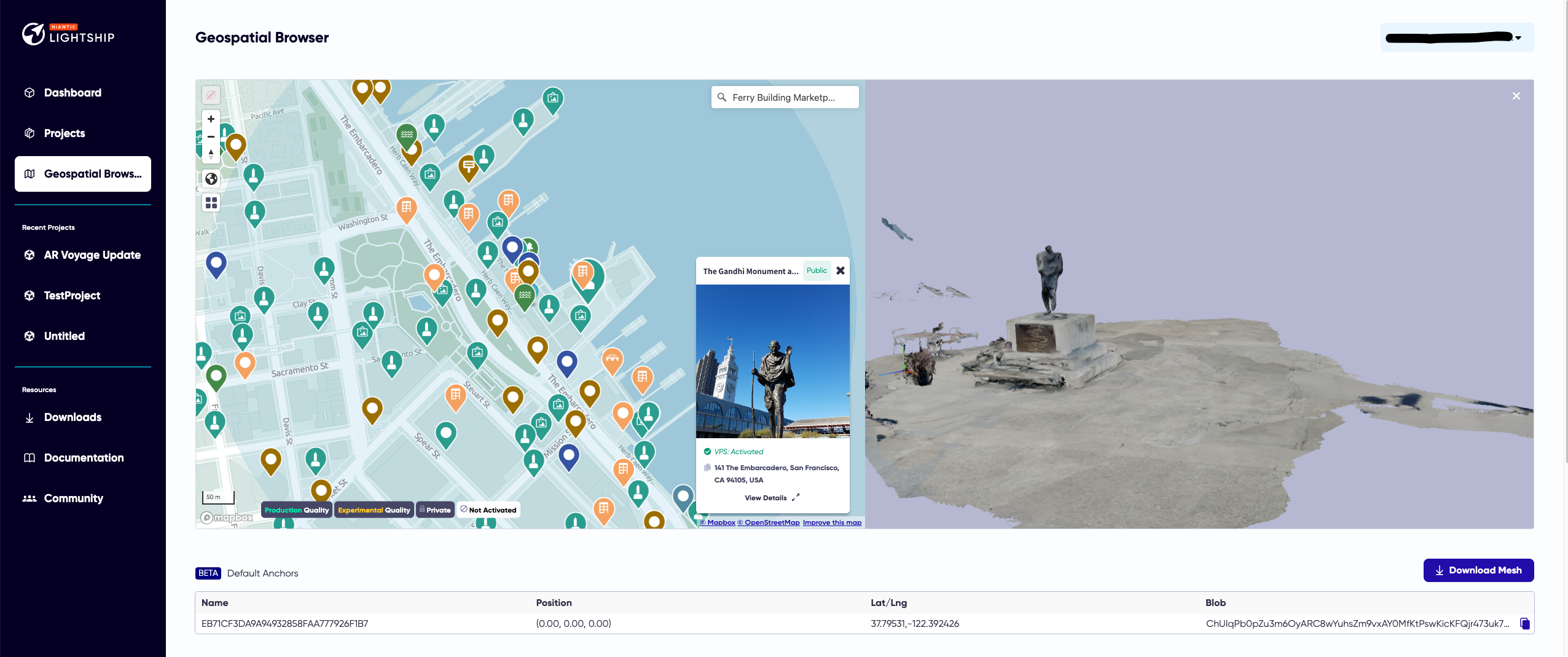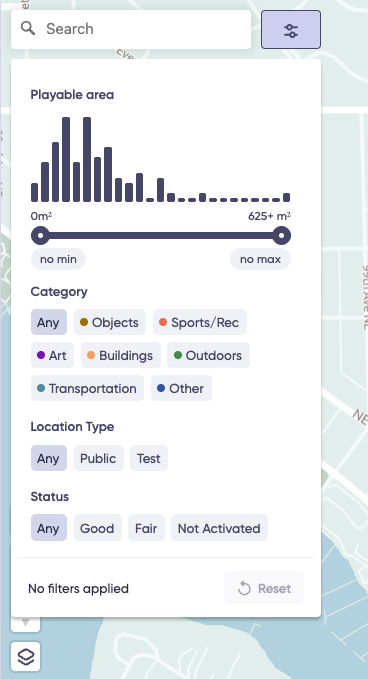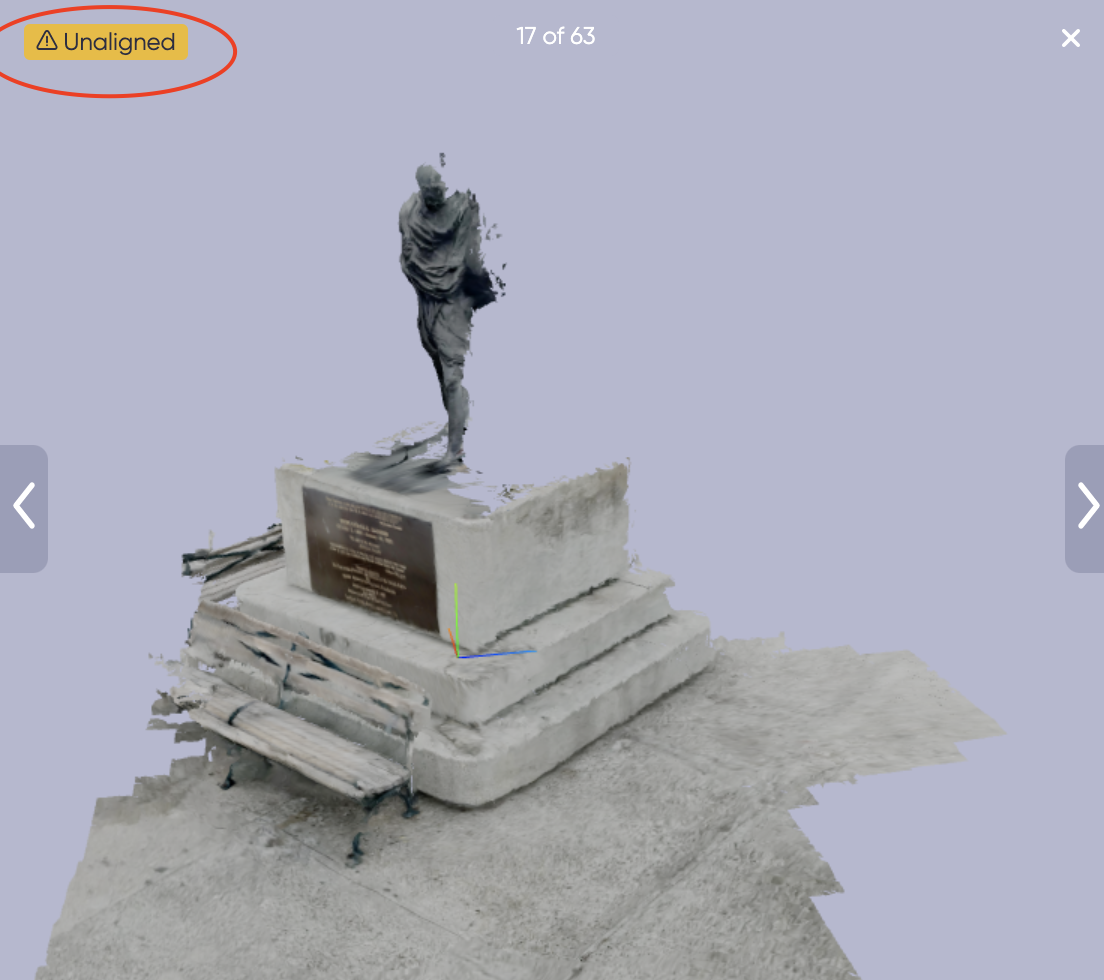How to Use the Geospatial Browser
The Geospatial Browser allows you to search and find VPS-Activated locations across the globe. You can select the locations you want to use for your project and download the associated 3D mesh assets.
Prerequisites
You must have an account set up on https://lightship.dev.
Steps

- Access the Geospatial Browser
- Go to https://lightship.dev.
- Click Sign-In in the upper right corner.
- This should take you to the Dashboard. On the left-hand menu, click Geospatial Browser.
- Select a VPS-Activated location.
- Navigate the map to find a location. You can use the Search bar at the upper right of the map to navigate to a particular city of interest.
- Select a location. This will show you the associated mesh.
- Download the Mesh.
- Once you’ve selected a location, click Download Mesh.

- This will download a zip file to your browser’s download directory.
tipLeave the package zipped for use with the VPS Authoring Assistant in Unity.
- Once you’ve selected a location, click Download Mesh.
- To load the mesh, see How to Place Content in Real-World Locations Using Location AR.
Using Filters
The category filter (lower left button on the Geospatial Browser map view) allows you to search through various types of locations.

You can choose to filter on:
- Objects: Objects include benches, water fountains, signs, trail markers, etc.
- Sports/Rec: Indoor and outdoor locations such as sports fields, stadiums, bowling alleys, ice or roller rinks, etc.
- Art: Indoor and outdoor pieces of art, from photographs to statues and murals.
- Buildings: Buildings including offices, restaurants, retail establishments, government buildings, etc.
- Outdoors: Outdoor locations such as gardens, urban plazas, playgrounds, hiking trails, bodies of water, etc.
- Transportation: Train stations, bus terminals, footbridges, etc.
- Other: Other types of VPS Locations.
Locations in the real world get nominated to be on the Niantic Map. Users can provide scans for approved locations. With enough good scans, locations become VPS-activated and are assigned a quality rating. On the bottom of the screen of the Geospatial Browser, you can see the filters for VPS location quality and activation:
- Production Quality/Experimental Quality: VPS-activated locations are either Production Quality or Experimental Quality. The quality of a location refers to a user's ability to localize at any time of the day at that particular location. Locations with several scans in all types of lighting tend to be Production Quality. Locations with the minimum number of scans or a majority of scans in one type of lighting tend to be Experimental Quality. Use locations with Production Quality to ensure the best experience when you test your app in the wild.
- Private: Private locations are only accessible to your Workspace. They can be created by scanning a location using Niantic’s Wayfarer app. Private locations are intended for use during development and, due to possible performance issues, should not be included in a published project.
- Not Activated: Approved locations that do not have enough submitted scans will be labeled Not Activated. To request activation, a minimum of ten viable scans must be submitted and two scans need to be at least five hours apart. Click on "View Details" to see the Scan Progress and Activation Status. See How to Create a Public Location for more information.
Location Tags
In the Geospatial Browser location detail view, you will see two different types of location tags:
- Public: Public locations have been approved by Niantic’s Trust & Safety team and have met the required criteria of safety and public accessibility. These locations may be used in published projects.
- Private: Private locations are only accessible to your Workspace. They can be created by scanning a location using Niantic’s Wayfarer app. Private locations are intended for use during development and, due to possible performance issues, should not be included in a published project.
Browsing 3D Meshes
How well a mesh covers a given location varies. Some meshes may only cover a strip of road, or grass, while other meshes cover a much larger percentage of the location. You may need to browse several meshes before you find the one that suits your needs. (We are working on improving mesh quality in the future).
Some meshes from Experimental Quality Locations are marked as Unaligned.

An unaligned mesh is less reliable than an aligned mesh and you should use it at your own risk.